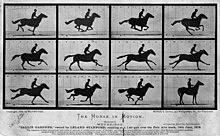 |
| This is my final GIF file that I created |
The first step into making a GIF file is to import all your photos into photoshop. Once you open all your files they will open as layers. Then go to window, then select timeline and a bar will appear at the bottom of the page. Select the bar that says create video timeline and change it to create frame animation.
Below is a screenshot of the layout of what inside Adobe After effects looks like. When creating an animation you first need to go into Photoshop and create two different layers, one for the background of the sky then a second of the cutout of the plane. Then save the file to your computer but make sure the layers are able to be edited in After Effects.
Then open After Effects and import your photoshopped image. Where you can see the image click the small arrow to show all the separate layers then drag the sky/background layer into the timeline. Once its in the timeline press the drop down arrow to transform and then press the arrow next to that until you can see the position and scale adjustment. Make sure your at the start of the timeline and click the symbol next to the position. Then make the size of the sky bigger than the frame and drag it to the side slightly. Once you've done this then drag the yellow arrow in the timeline to end of the time, mine was around 15seconds and then drag the sky slightly to the other side just so that when the animation is playing the sky looks realistic as its moving slightly. Once you've adjusted the sky, drag the plane layer into the timeline and place it above the sky layer. From here drag the plane to where you want it to be in the frame. Doing the same steps as the sky in transformation you want to make a keyframe for at the start for the plane to have the size you want, then the end of the timeline you wanna make the second keyframe of the plane smaller than the beginning to make it look as if it's heading of into the sky.
This is the link to my after effects file.
























